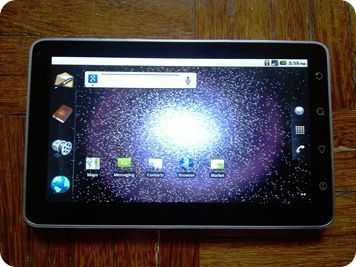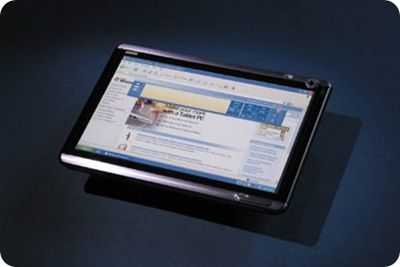

Mi700 on the left. Haiku Concept by Microsoft’s Origami Team (2005/2006)
You love full PC’s in the hand I know, but I just wanted to highlight the Mi700 7 inch tablet that is being reviewed over at Carrypad. It’s running Android 2.2 and it’s fully stocked with all the hardware features you’ll find in a phone, including the phone. It’s arguable that there are things you can do with the Mi700 that you just can’t do easily with a ultra mobile PC or Windows-based tablet. Location services, social networking, 3.2MP photography, instant sharing, always-on, always-on battery life and turn-by-turn navigation to name just a few. On the other hand, what about the productivity apps?
Check out the review and tell me what you think. Personally I think it fits Origami better than the Origami devices did and i’m excited to get down to some serious testing with a similar device, the Viewsonic Viewpad 7, very soon.











Spice Mi700 Review – Origami Re-Born!: Read more … Related posts: – ‘In Other Ultra-Mobile… http://goo.gl/fb/xzBlH
Spice Mi700 Review – Origami Re-Born!: Read more …
Related posts:‘In Other Ultra-Mobile News…’ October 1st He… http://bit.ly/daiqVG
Origami was the name for pen-computers that were ultra mobile PCs. I shouldn’t have to tell you this; the first for letters of this domain name are UMPC.
This isn’t a PC, and there’s no pen. Origami devices came loaded with a copy of Microsoft’s Tablet PC operating system, which is arguably its most feature rich and creative for end-users. How you see this as comparable to Android, I don’t get.
I mean, the vision of a UMPC is to be able to do what a PC can do whenever and wherever you are. It’s about signal rather than noise, creation rather than consumption, and essential rather than inane, durable rather than disposable, organized rather than immediate.
Oh well. Even though you tricked me into reading your article, I still enjoyed what I read. It’s good coverage. Like a beautiful woman, it looks even better once you wash off the makeup.
I see Origami as something different. Origami, the name of the project, proposed connected, social, entertainment PCs. What came out were what we know as UMPCs because they simply couldn’t deliver the expoerience due to hardware and software limitations. If you look at the early promotional material, you see where they were heading.
This isn’t a UMPC though, I totally agree with that.
As I mentioned in my Orimgami look-back: “They wanted to produce slick, tablet-style mobile Internet-connected devices at low prices.The problem was simply that the technology wasn’t there, the technology was expensive and the OS wasn’t optimised. There wasn’t enough early-adopter demand to carry the concept through the first few iterations while technology, pricing and operating systems caught up with the vision.”
I know what you’re saying though. This isn’t a mobile PC (although I would advise to look at some of the important things it can do that UMPCs can’t)
Hoping these get more and more productive as time goes on.
well in regard of “prodctivity” so much: there are a bunch of companies developing office compatible suites, may be these will pop up next year. but if one needs other productivity stuff (used under windows or linux) one will be left on the cliffs. that’s the caveat of android as well as ipad/phone/tab os. thus the limitations (or boundaries) of usage are clearly given at the time. btw the same were the short comings of wince too. therefore the yummi expression “productivity” will have to be defined more precisely each time used.
eg i want to able to run all my office, scientific, grafics, multimedia production, web production, pdf and edocument production and document management stuff as core applications on a device. all the rest like social stuff and entertainment and such are commodities, not main necessities (for me).